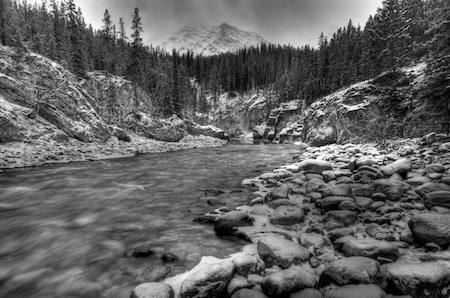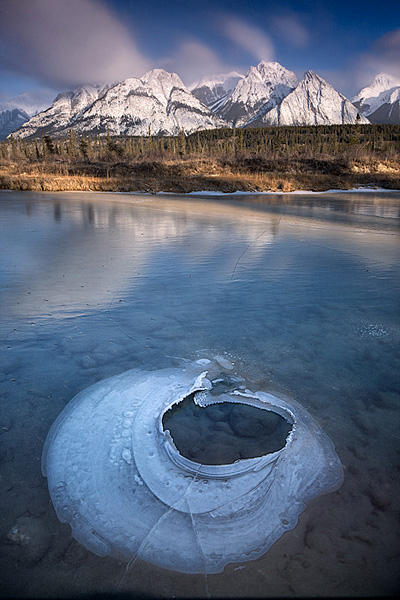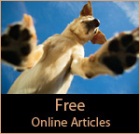
© Örvar Þorgeirsson
Darwin: You have an eye for images that are contextual (tell a story) but are full of mood and drama and a sense of the pulsating of life. In short you are a cross between a documentary journalist and an expressionary artist. The combination is rare. What advice do you have for photographers interested in developing their own signature style?
Örvar: I believe you will get your best results photographing things that interest you in an environment that you enjoy. I started out trying to photograph various things like street photography, events and even still life but I quickly found out that landscape photography was where I enjoyed myself the most and got the best results. Looking back I think it was inevitable that I would end up in this part of the photography spectrum as the outdoors and wilderness have always fascinated me and the photography is really an extension of that. I study the work of other photographers a lot for inspiration. There are a lot of good photographers out there and getting input from the ones you like and applying it to your field of photography for the environment where you shoot will help develop your own signature style.
Darwin: You live in Iceland, which over the last decade has become the place to go for evocative landscapes. What is it about your country that appeals to so many photographers?
Örvar: I think the variety of different landscapes in a relatively small area is what makes Iceland interesting as a photographer’s destination. Volcanoes, glaciers, waterfalls, deserts, deep green valleys and rugged coastlines can be found at many places elsewhere in the world but all these features in an area the size of a small US state is what makes Iceland appealing. For most people being located in the middle of the North Atlantic Ocean, near the Arctic Circle is not an ideal place to be but for landscape photographers this has two major advantages.
The biggest one is probably that the turbulent weather combined with often hours of continuous low angled sun (specially around summer and winter solstice when the sun travels horizontally just under or above the horizon) creates some really colorful and interesting light on top of the scenery found here. The other one is that the open landscape of this windy island, lacking much forest, makes interesting features easily visible from a distance. These two advantages combined, will enable traveling photographers to spend more of their hard earned free time shooting and less time on hanging around waiting for the right light and finding locations. Our recent total economic meltdown also means that Iceland went from a very expensive travel destination to being affordable.
Darwin: I am sure everyone wants to know a few technical tips and making great Aurora. What camera settings, lens choice, etc. are good starting points for beginners shooting the Aurora?
Örvar: The basic technical principle behind Aurora photography is to capture as much light as your gear can without degrading your image quality too much. This means high ISO settings, larger aperture lenses and fairly long exposures. In a typical shot, I use ISO 800 at f/2.8 for 20-30 seconds. This works well for low intensity and static displays of Aurora, which are the most common ones. When things start to heat up and the Aurora really lights up and starts dancing around the sky, I shorten my exposure time as much I can, going 3 to 5 seconds to avoid blurring the Aurora by its movement during the exposure. This means that I have to increase my ISO up to 3200 on my Canon 5D MKII.
If one plans a trip to shoot Aurora then the best time is to do so during half moon. The full moon will render daytime-like light for the long exposures and the new moon makes the foreground too dark. Very wide-angled lenses with large apertures work best for Aurora shooting. I have tried many of them including Canon 16-35mm f/2.8L, Canon 14mm f/2.8L and adapted Nikon 14-24mm f/2.8 lenses. Although the Nikon is much better than the Canon lenses, they all suffer from bad to really bad corner sharpness at f2.8. Recently I a friend recommended I try a little known 14mm lens from Samyang. To my surprise in Aurora photography, it outperformed all the above-mentioned lenses by far. And the best part yet–at 350USD it cost only a fraction of what the Canons and Nikons do. The lens is fully manual including aperture but it does not really matter anyway for nighttime shooting. And no, I am not sponsored by Samyang.
Darwin: How many years have you been shooting? It seems like you have accomplished a large number of top tier images in a relatively short time. What’s your secret?
Örvar: I have been into photography for 5 years now. Before that, during my mountaineering years, I loved documenting my adventures through a camera but I really did not know what I was doing back then. During these years I read through hundreds of magazines and books often beautifully illustrated by mountain scenery. Unaware of it but soaking up in all those images and beautiful scenery probably helped my development as a photographer. I am also one of those that really dives into things once I get interested in them. I have put a lot of time and effort into photography during these 5 years. But also having relatively easy access to varied landscapes here in Iceland helped build my portfolio quickly.
Darwin: One part of your signature style is the dramatic use of near/far perspective. It is difficult for many photographers to make a cohesive composition with a wide-angle lens because there is so much of the environment taken in. How do you make such clean cohesive compositions with a wide-angle lens?
Örvar: This is a difficult question. As you say the wide angle grabs a lot of the environment and much of that will often be in your foreground. One therefore needs to find places with a simple foreground that does not clutter the image. Some locations work better for wide angles than others. Seascapes and water surfaces, frozen lakes, deserts, snowfields and rivers are where you most often find those uncluttered foregrounds. Most of my portfolio is from Iceland, which suits wide angles very well. I quickly run into trouble shooting wide when traveling abroad in areas with forests and heavy vegetation. So I guess it might be more the environment where I shoot mostly rather than a special skill that I have.

© Örvar Þorgeirsson

© Örvar Þorgeirsson

© Örvar Þorgeirsson

© Örvar Þorgeirsson

© Örvar Þorgeirsson

© Örvar Þorgeirsson

© Örvar Þorgeirsson

© Örvar Þorgeirsson

© Örvar Þorgeirsson








































